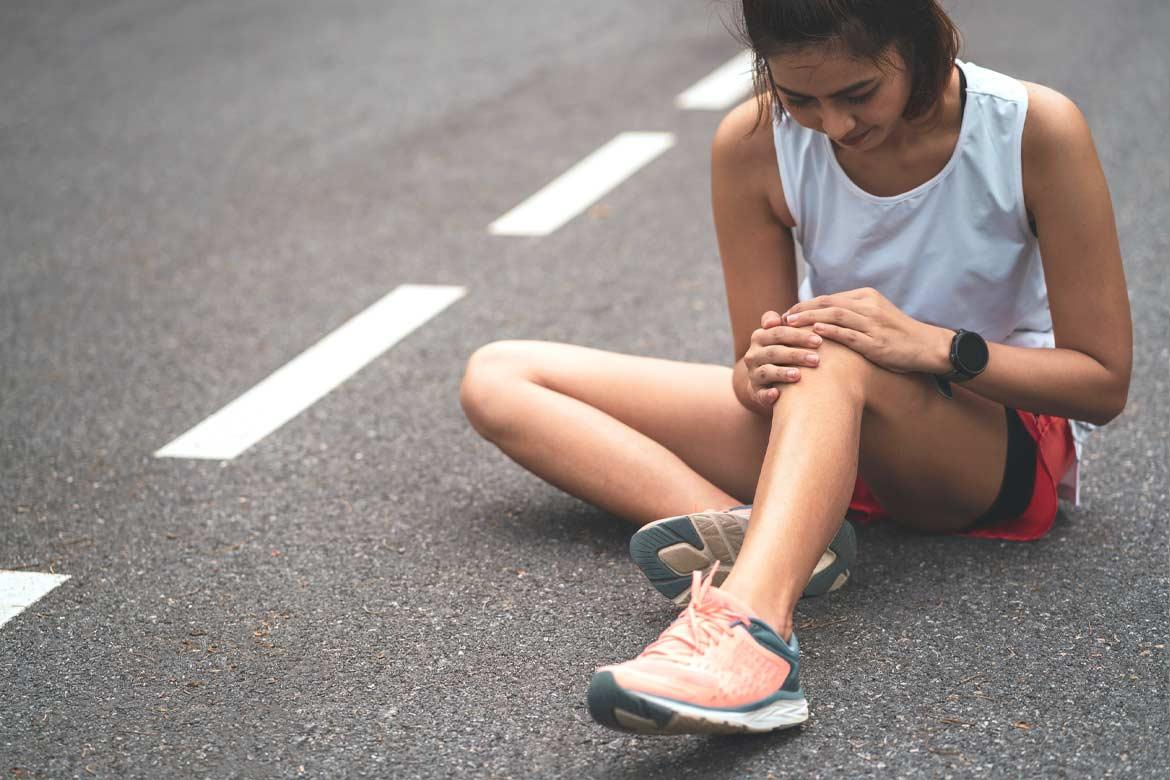
Sprains
What is a sprain?
A sprain is a stretch, twist or tear in a ligament. Ligaments are fibrous bands of tissue that connect two bones in a joint. A sprain can occur suddenly, such as during a fall. Common locations where you may sprain yourself include ankle, neck, wrist and knee.
Sprains vs strains
While a sprain is an injury to a ligament, a strain occurs when muscles or tendons are stretched or torn. Strains are referred to as ‘pulling a muscle’. Both a sprain and a strain have similar symptoms such as pain, swelling, bruising, tenderness, and difficulty moving the affected area.
What are the symptoms of a sprain?
Common symptoms of a sprain include:
- Pain
- Bruising of the joint area
- "Popping" in your joint when the sprain occurs
- Stiffness of the affected joint
- Swelling around the joint
Sprain vs fracture symptoms
A fracture is a break in your bone due to an impact, such as an accident, fall or sports injury. Although they share common symptoms, a fracture is more severe than a sprain or strain. You are likely to be in severe pain and unable to move the affected part. If you break a bone in one of your limbs, it may look out of place, such as being bent or twisted.
If you suspect your bone is fractured or you are unsure, seek medical care immediately. Your doctor is likely to order an X-ray to check your bone before any treatment.
What causes a sprain?
You may experience a sprain when your joint is severely stressed. This can happen when:
- You are exercising or playing sports
- You are lifting or moving heavy objects
- Your posture is incorrect when you sit or stand
- You have an accidental fall or injury which impacts the joint
- You are putting too much stress on the joint, such as by pushing yourself too hard or repeating the same movements over a period of time
Ankle sprain causes
- Falling and twisting your ankle
- Improper landing from a jump
- Walking or exercising on bumpy ground
Back sprain causes
- Improper lifting
- Curving the lower back excessively
Knee sprain causes
- Direct impact to the knee, such as during an accident
- Rotating with your knee (e.g. when you play sports)
Wrist sprain causes
- Falling and landing on your hand
Thumb sprain causes
- Hitting your thumb against a hard surface
Toe sprain causes
- Trauma, such as hitting your toe on a piece of furniture
- Hyperextension beyond your toe's natural range of movement
What are the complications and related diseases of a sprain?
A severe sprain may lead to a fracture or dislocated joint.
Treat a sprain promptly and allow it to heal before resuming physical activity involving the affected joint. This will prevent chronic pain or chronic joint instability.
How do you prevent a sprain?
To prevent a sprain:
- Strengthen and condition the muscles around your joints.
- Exercise regularly to keep your muscles flexible and improve your fitness.
- Take breaks from repetitive motions, prolonged sitting or standing, to relax your muscles.
- Use supportive footwear and equipment.
- Warm up before a physical activity.
This coverage checker is brought to you by Health Insured, an online resource that helps you understand your health coverage in Singapore.
This page has been reviewed by our medical content reviewers.
Need help?
For enquiries, please call
+65 6250 0000 (Orchard) or +65 6898 6898 (Novena)
For appointment bookings, please WhatsApp
+65 8111 7777 (Orchard) or +65 8111 5777 (Novena)
 Brain & Spine Care
Brain & Spine Care


